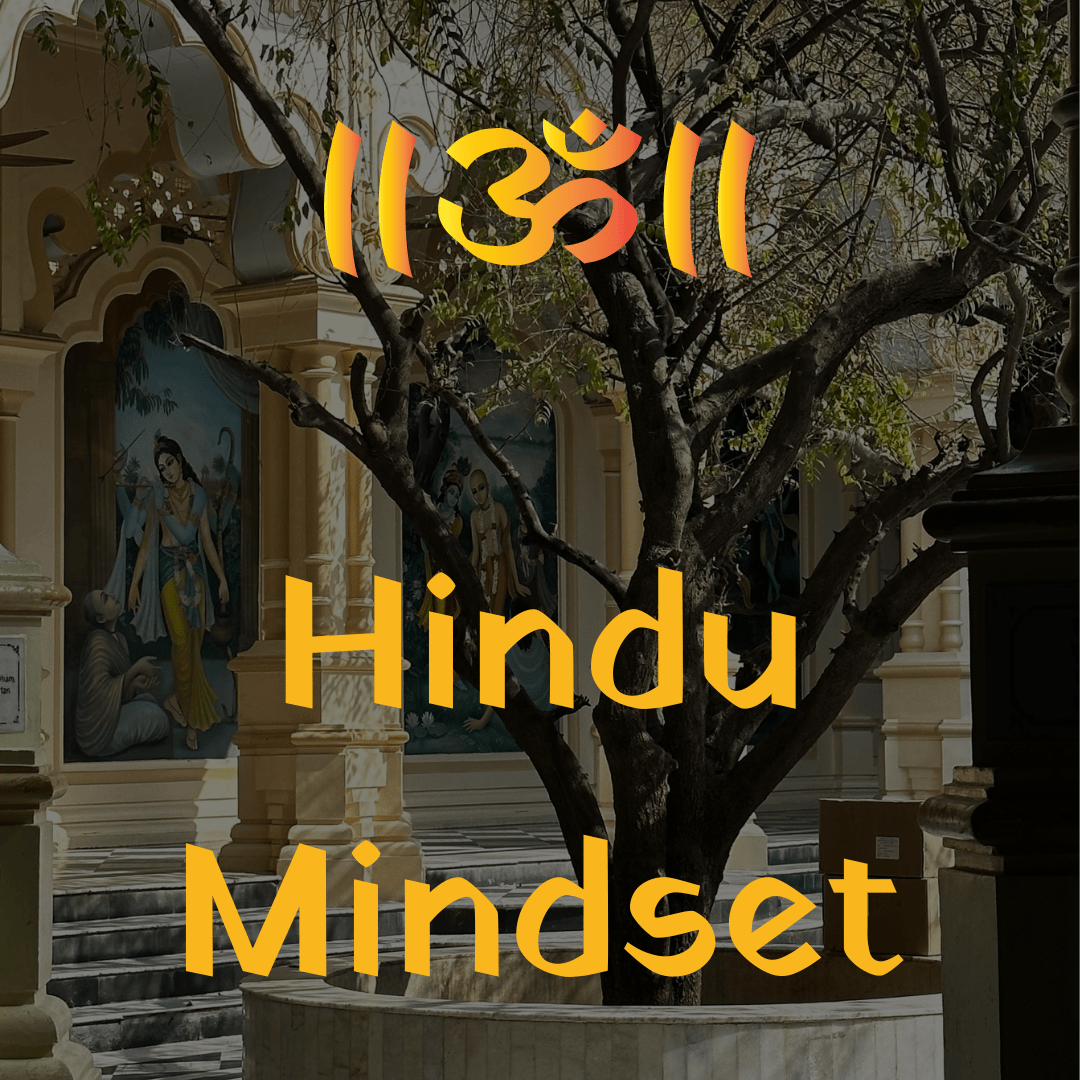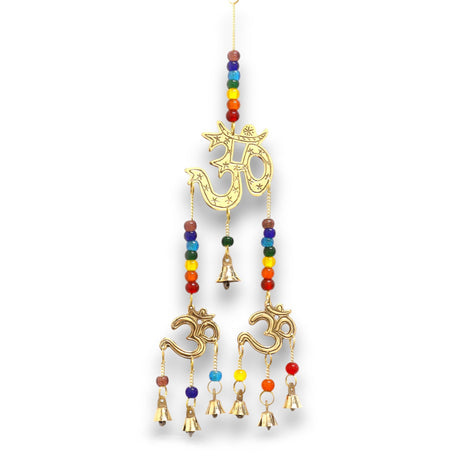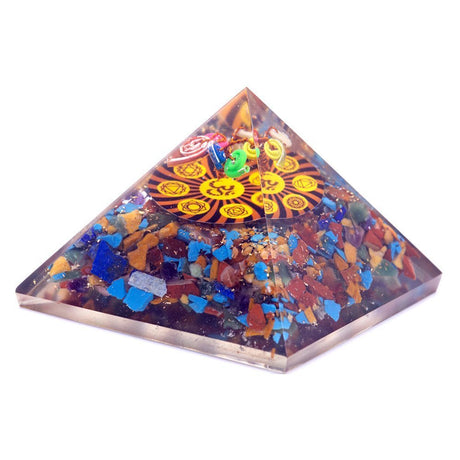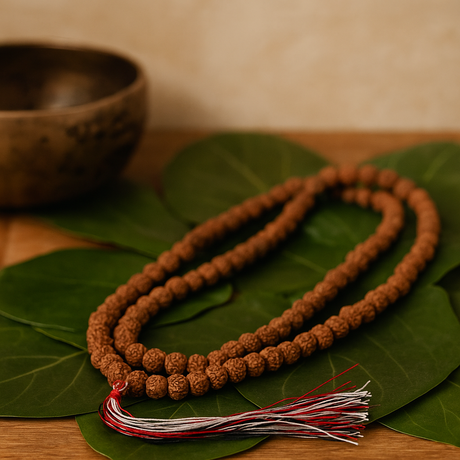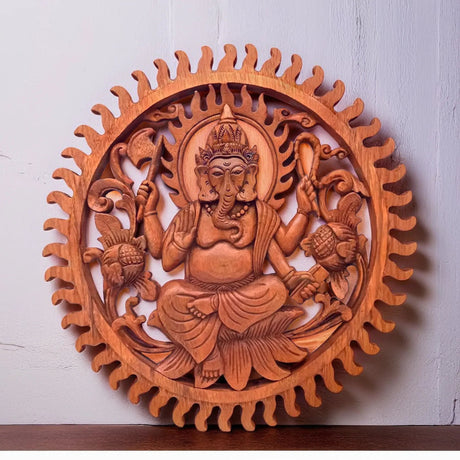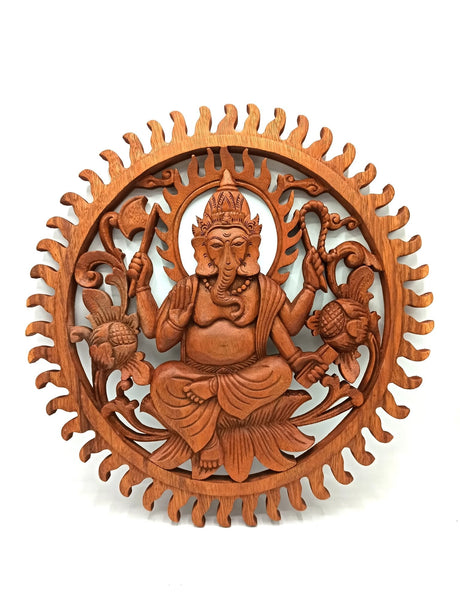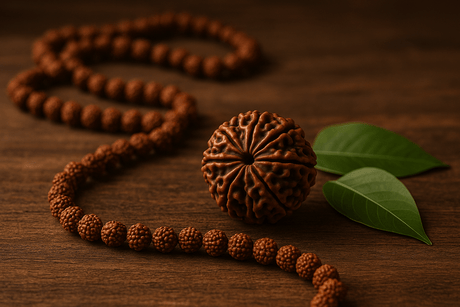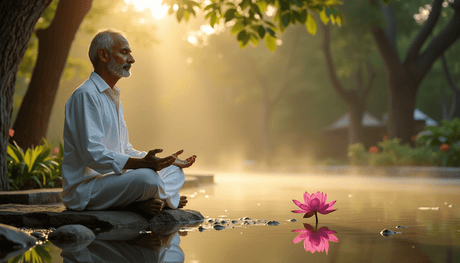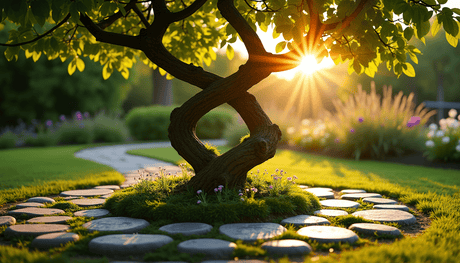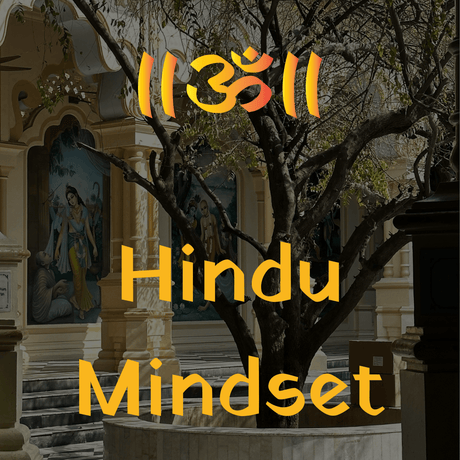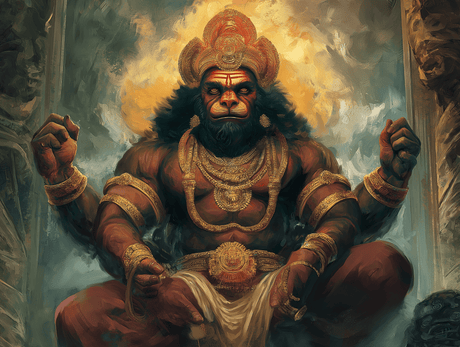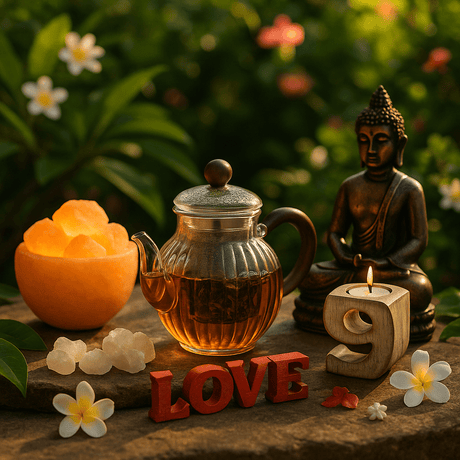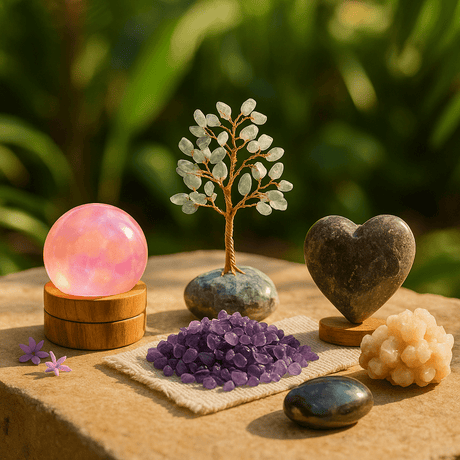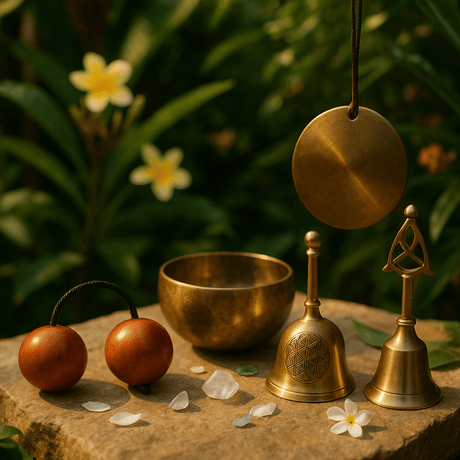Hinduism: A Way of Thinking and Perceiving Life
For me, Hinduism isn’t even a religion in the conventional sense. It is a way of thinking and perceiving the world, encompassing all aspects of life, from rituals to everyday actions. Hinduism teaches us to see the sacred in the ordinary and to live in such a way that we draw closer to harmony every day.
But Sanatana Dharma (सनातन धर्म) goes even deeper. It is the “eternal law” or “eternal way” that underlies not only Hinduism but also other spiritual traditions in India, such as Buddhism, Jainism, and Sikhism. It encompasses universal principles that remain constant through time. For me, Sanatana Dharma became more than just a philosophy—it became a compass that helps me move through life mindfully and with respect for all living beings.

Satya सत्य: Truth as a Way of Being Yourself
Satya (satyá) isn’t just truthfulness in words—it’s an entire philosophy of life. It teaches us to be honest with ourselves and with others, to drop pretenses, and not to try to seem like someone we are not. I realized that insincerity arises because we don’t understand our true nature and role in the world. This causes inner discomfort and distorts the way we perceive reality.
"Satya teaches you to be who you are."
Now, I try to express my thoughts and feelings openly, without fear of appearing vulnerable. This freed me from the need to play roles and allowed me to live in harmony with myself.
The era in which truth reigned in every corner of the world was called Satya Yuga. Even though we are now living in Kali Yuga—the age of ignorance and conflict—the pursuit of truth remains a guiding star.

Moksha मोक्ष: Liberation from Attachments and the Cycle of Rebirth
I used to think that the meaning of life lay in success, recognition, and the achievement of external goals. I believed that these accomplishments would bring me real satisfaction. But over time, I noticed that even the most significant victories left me feeling trapped in inner emptiness. The peace I sought was always fleeting, slipping through my fingers like water. Every peak I reached only revealed new, steeper slopes, and every achievement gave rise to new cravings.
At some point, I began to wonder: What if the very idea that peace can be found outside of us is an illusion? This thought introduced me to a deeper understanding of moksha (मोक्ष). As I came to realize, moksha is not a reward for worldly achievements or even the result of spiritual practices. It is a state of inner freedom—one that emerges when the need to be someone or achieve something in the eyes of others dissolves. Liberation is not the final destination; it’s the moment you realize that the path itself was always an illusion.
"Moksha is the awakening from a dream, where all goals, victories, and defeats were just illusions, and the discovery that everything you sought was always within you."
At the heart of moksha lies the release from samsara (संसार)—the endless cycle of birth, death, and rebirth. According to Hindu philosophy, every action (karma) creates consequences, which bind the soul to this cycle of reincarnation. As long as we remain trapped in desires, attachments, and ignorance, the soul (atman, आत्मन्) continues to take on new lives, repeating the same patterns again and again. Moksha offers freedom from this repetition—the end of rebirth, not by escaping life, but by seeing beyond the illusions that create suffering.
Liberation from attachments does not mean withdrawing from the world or abandoning responsibilities. It means accepting life as it is, without the compulsion to change or control it. It is not renunciation but participation without clinging. In this state, you no longer experience life through the lens of expectations or ambitions, but as a perfect expression of the present moment.
"Moksha is not the pursuit of peace, but the realization of peace in the absence of striving."
This understanding of moksha has transformed how I live my life. It has taught me that peace cannot be found through external achievements but through letting go of the endless pursuit. The cycle of desires and expectations is just a game of the mind, but moksha reminds me that I can step out of that game at any moment. Every experience, every moment, already contains everything I need to feel free.

Dharma धर्म: Living in Harmony with Duty and Nature
Dharma (dharma) is not just a moral duty but a complex and multi-layered concept. It encompasses the entire order of the world—both personal and cosmic. For me, dharma became not only a compass for the right actions but also a way to understand how I fit into the broader picture of life.
Dharma changes depending on one’s life stage, profession, and circumstances. Each of us has our own role and duty: what is right for one person may not necessarily be right for another. This teaches us to respect diversity and recognize that everyone has their own path.
"Following your dharma means walking through life in alignment with yourself and the world."
In practice, this means fulfilling your duties with readiness and respect. For example, in relationships, it could mean caring for loved ones, and at work, it could mean fulfilling your responsibilities with integrity. Even if others don’t appreciate it, following your dharma brings inner peace, because you know you are doing the right thing.
But dharma isn’t just a set of rules. It also involves the ability to understand when to step beyond conventional frameworks. Life is complicated and unpredictable, and sometimes we need to approach our duties flexibly. Wisdom lies in distinguishing true duties from imposed obligations.
"Living by dharma isn’t blindly following rules—it’s seeking harmony in every action."
Performing your dharma creates good karma, which helps you on the path to moksha. Conscious actions, performed without expectation of reward, gradually free us from attachments and ego. Dharma teaches me to view life not only from the perspective of my desires but also through the lens of responsibility toward the world and others.

Karma कर्म: How My Actions Shape Reality
Karma (karma, कर्म) is the universal law of cause and effect. Everything we do, say, or even think leaves a trace that inevitably influences our future. Karma shows that the life we are living now is not a coincidence. It is shaped by our actions, both in this and past lives. Understanding karma gave me the realization that I am not a victim of circumstances but the creator of my own reality.
Every action performed with intention (संकल्प, sankalpa) is like a seed that will eventually sprout and bear fruit. If the action is rooted in kindness, honesty, and compassion, it creates positive karma (सुकर्म, sukarman), which brings harmony and joy. But if actions arise from selfishness, greed, or malice, they generate negative karma (दुष्कर्म, duṣkarman), which brings suffering and obstacles.
"Karma is a constant reminder that every thought and every action matters."
When I encountered the Bhagavad Gita (भगवद् गीता), my understanding of karma and life profoundly changed. One of the most challenging questions for me was about the existence of evil in this world. Why do people suffer? Why does evil exist if there is a God? The Bhagavad Gita helped me realize that evil is not divine punishment but a natural consequence of the free will (स्वतंत्र इच्छा, svatantra icchā) given to us by God. Through our actions, we ourselves create karma that brings both good and suffering.
"Evil is not created by God—it is born from our choices and actions."
The Bhagavad Gita also taught me that evil offers an opportunity for growth and awareness. When we encounter suffering, we learn to distinguish between right and wrong, and through our choices and actions, we shape our destiny. Karma is impartial: it returns to us what we have sown, offering us the chance to understand the consequences of our actions and change our path.
Karma teaches me that even if the consequences of my actions do not appear immediately, they will inevitably manifest in time. Therefore, it is essential to act consciously, without expecting instant rewards. Following dharma (धर्म) helps me avoid negative karma and walk through life with a sense of responsibility. Dharma is my compass, guiding me to act in alignment with my true nature and duty.
"Karma reminds us that we create our future with every moment of the present."
This philosophy has helped me change my attitude towards challenges. Now I understand that even difficult situations are the result of my karma and contain lessons I need to learn. Every encounter and every situation is an opportunity to create new karma and build harmonious relationships with myself and the world around me.

Ahimsa अहिंसा: The Path of Non-Violence and Kindness
Ahimsa (ahimsā, अहिंसा) is not just the avoidance of physical violence but also the effort to prevent harm in thoughts, words, and actions. I realized that even negative thoughts or hurtful words not only damage others but also harm me.
"True strength lies in maintaining peace within yourself and around you, even in the face of aggression."
By practicing ahimsa, I became more mindful of how I treat others. This influenced my habits: I chose vegetarianism as a way to respect animal life and strive to resolve conflicts peacefully. Ahimsa taught me to seek solutions that bring peace rather than discord.
"Every living being is connected to us, and kindness toward others returns to us in kind."
This principle also encouraged me to take care of myself: to avoid self-judgment and treat myself with compassion. Ahimsa begins within—by accepting yourself as you are—and only then extends to your relationships with the world around you.

Brahman ब्रह्म and Advaita अद्वैत: The Unity of All Existence
Understanding Brahman (Brahman, ब्रह्म) was a turning point for me. Brahman is the all-pervading reality that permeates everything. It transcends time and space and has no form, yet it manifests through everything—from atoms to deities like Shiva (शिव) and Vishnu (विष्णु). Within each of us lies a fragment of this supreme force—atman (ātman, आत्मन्), our soul.
"The ultimate goal is to realize that atman and Brahman are one, and through this understanding, achieve liberation from suffering."
As I delved deeper into the philosophy of Advaita (Advaita, अद्वैत), I began to understand that many distinctions—between people, between good and evil, between life and death—are merely illusions (māyā, माया) created by the mind. At the deepest level, everything is interconnected and an expression of the same unified whole. The division between my soul and the supreme reality exists only in my mind.
"When you understand that all differences are illusions, true peace and freedom follow."
This realization transformed how I perceive the world and freed me from narrow identities such as race, religion, or culture. I stopped seeing people through these lenses, recognizing that each person is a part of the same Brahman. Now, I strive to see the soul in everyone, rather than the labels or roles they embody.
"When you see a fragment of Brahman in every person, it becomes easier to accept them as they are."
This awareness has given me inner peace and taught me to approach the world with tolerance and compassion. Beneath the surface differences, we are all manifestations of the same whole.
Respect for Diversity and the Many Paths to the Divine
One of the most inspiring ideas for me is the realization that in the Hindu mindset, there is no single, correct path to the Divine. This philosophy embraces diversity in all aspects—beliefs, rituals, spiritual practices, and ways to achieve enlightenment. Every individual is unique, and their journey toward truth cannot be confined by rigid rules or dogmas.
"The spiritual path is not a set of doctrines but a personal journey, where each person chooses their own rhythm and direction."
There are different yogas (योग) that help people attain spiritual realization:
- Bhakti Yoga (भक्ति योग) – the path of love and devotion, for those who connect with the Divine through worship and deep emotional attachment.
- Jnana Yoga (ज्ञान योग) – the path of knowledge, guiding seekers to truth through philosophical contemplation and self-inquiry.
- Karma Yoga (कर्म योग) – the path of selfless action, where one achieves liberation through service to others.
- Raja Yoga (राज योग) – the path of meditation and self-discipline, which opens the door to inner peace and stillness.
These different paths show that every individual can choose the approach that resonates with them. They teach that enlightenment can be reached through various forms of pursuit—whether through action, love, knowledge, or meditation.
"Truth is not the monopoly of one path. All roads lead to the same goal—realization of unity with the Divine."
What inspires me the most is how polytheism and monotheism coexist harmoniously within this philosophy. Some see the Divine in many gods, each representing different aspects of the supreme reality, while others prefer to worship one supreme force. Both understand that behind all these forms lies the same Brahman (Brahma, ब्रह्म).
"Each deity is just a window into the same infinite reality."
This openness and lack of dogmatism have given me the freedom to experience spirituality as a journey of acceptance and exploration rather than adherence to strict rules. In Sanatana Dharma, diversity is not just tolerated—it is celebrated. This worldview teaches us to respect others' beliefs and recognize the value in every practice, even if it differs from our own.
"Every path has its significance, and all lead to the Divine. What matters is not how you walk but that your heart is open to the truth."
This understanding has freed me from the need to meet external expectations and taught me to respect others' journeys. Spirituality is not a competition but a space for exploration, where everyone can find their own way and walk it at their own pace.
Time as Cyclical and Eternal
In Sanatana Dharma, time is perceived as a cycle (युग, yuga) rather than a linear process. Everything in life moves through repeating stages: birth, growth, decline, and renewal. Just as day follows night, and spring arrives after winter, the events of our lives follow a cyclical pattern.
"Nothing lasts forever—neither joy nor suffering. Everything comes and goes, only to return again."
This perspective on time gives me patience and resilience. Trials and hardships, like the Kali Yuga (कलियुग)—the age of darkness—will inevitably give way to Satya Yuga (सत्ययुग)—the age of truth and harmony. Understanding the cyclical nature of existence helps me accept difficult moments, knowing they are temporary.
"If tonight is dark, tomorrow will surely bring light."
A key part of this worldview is the long-term perspective. Life does not end with one incarnation—every action leaves an imprint and influences not only the present life but also those to come. Reincarnation (पुनर्जन्म, punarjanma) and samsara (संसार) represent the soul’s journey through multiple births and deaths, continuously learning and evolving.
"The goal is not short-term success but continuous spiritual growth, which extends beyond a single lifetime."
Seeing time as a cyclical process teaches me not to be attached to immediate results. This frees me from anxiety and allows me to appreciate the journey itself. What matters is not how much I achieve in a brief moment but that every action and every effort contributes to my spiritual development.
"True wisdom lies in seeing beyond the present moment, understanding that each moment is woven into the infinite thread of time."
Respect for Nature and the Environment
Nature is a sacred manifestation of the Divine. Everything around us—rivers, mountains, trees, animals, and even the elements—is infused with Brahman (ब्राह्मण) and connected to us through a shared energy. In Sanatana Dharma, humans are not regarded as rulers of nature but as an inseparable part of it, with whom they must live in harmony.
"Nature is not just the backdrop of our lives but the living fabric of the Universe, into which our souls are woven."
These beliefs are reflected in daily traditions. Natural elements are revered as sacred because they embody different aspects of the Divine. The Ganga River (गंगा) is honored as a living goddess, one who purifies and offers blessings. Bathing in her waters is not just a ritual but also a way to express gratitude for her generosity and life-giving power.
"The waters of the Ganga are not just a stream but a touch of eternity."
Trees hold a special place in spiritual practice as well. Tulsi (तुलसी), considered an incarnation of the goddess Lakshmi, brings prosperity and protection to the household. Bilva (बिल्व), associated with Shiva, is often used in worship rituals. Peepal (पीपल) and Banyan (वट) trees symbolize wisdom and immortality, and their branches serve as places for meditation. People tie sacred threads around their trunks, praying for well-being and seeking protection.
"Each tree is a silent guardian, offering wisdom and shelter to those who seek it."
This reverence for nature teaches us that living in harmony with the environment is not just a responsibility but a spiritual practice. By respecting the natural world, we honor the Divine presence within it and acknowledge our role in maintaining the balance of life.
Respect for Elders
Respect for elders is not merely politeness but a profound spiritual practice. In Hinduism, parents, teachers, and elderly people are regarded as guides of knowledge and guardians of tradition, passing wisdom from generation to generation. They help us not only understand the world but also discover our own place within it.
"Respecting elders is an acknowledgment that our lives are woven into the thread of history and tradition."
As a sign of reverence, it is customary to touch the feet of elders or bow before them, seeking their blessings. Over time, I realized that this gesture is more than just a formality or adherence to tradition. For me, it has become a symbol of gratitude for their experiences and life lessons. It serves as a reminder that their wisdom is an invaluable resource that supports my journey and helps me grow.
Respecting elders also teaches humility and gratitude. It reminds us that each of us is part of something greater, and our duty is to carry forward the traditions and preserve the culture for future generations. We do not live only for ourselves; we pass the torch onward, ensuring that the connection between generations remains unbroken.
"By embracing the wisdom of the past, we become a link in the chain that binds generations together."
Rituals and Symbols: Spiritual Awareness in Everyday Life
Rituals and traditions transform life into a meaningful cycle, where every stage and event becomes significant. They teach me to pause at key moments and experience them mindfully, without getting lost in the rush of daily life. These practices create a structure through which even everyday actions take on depth, connecting me to something greater than just the flow of ordinary days.
"Rituals are a way to weave the sacred into the fabric of daily life."
Every ritual—whether it’s a morning greeting to the sun or complex rites of passage—helps me listen to the flow of time, feel the moment, and sense the deeper reality behind it. Instead of drifting through life, I see it as a continuous and harmonious cycle, where each moment deserves attention.
Symbols play a crucial role in these practices. They serve as a spiritual language, conveying what words cannot express. Symbols—whether mandalas, sacred patterns, or images of deities—allow me to connect with the unseen. Their meaning unfolds gradually, through contemplation and inner understanding.
"Symbols remind us that behind the visible world lies a deeper reality."
Through rituals and symbols, I have learned to live more mindfully, finding significance in things that once seemed mundane. Every gesture, every action becomes part of a unified spiritual journey, filling life not only with beauty but with meaning.
Conclusion: Between Striving and Acceptance
Immersing myself in Hinduism has truly changed my perspective, but I can’t say it has turned me into an enlightened and calm person. Every day remains a struggle—both with the world and with myself. The philosophy offers guidance, but reality, as always, proves to be more complicated. Even with the awareness of these wise principles, I still make mistakes, feel anger, and become attached to things and people I should have long since let go.
Following dharma or letting go of attachments is not easy in practice. Sometimes my actions are driven not by noble intentions but by fears and old habits. There are days when everything seems to go wrong, and thoughts about karma or non-violence offer little comfort. But Hinduism never promised a perfect life free from suffering—it only suggests a different way to look at things.
I appreciate the idea that perfection is unattainable, and that’s okay. Even when I don’t always manage to live up to ideals, the important thing is not to lose direction. Perhaps spiritual growth is not about being calm and righteous all the time, but about embracing vulnerability and imperfection, and moving forward despite it. That, to me, feels honest.
Now, I try not to blame myself for my weaknesses but to see them as part of the journey. Hinduism teaches me that the goal is not to become perfect but simply to keep trying—day by day. This brings a strange sense of relief: knowing that I don’t have to be someone else or perfect right now. It’s enough to be who I am in this moment and just keep moving a little closer to who I want to become.
"You have the right to act, but not to the fruits of your actions. Do not think you are the cause of the result, and do not seek refuge in inaction."
— Bhagavad Gita, 2.47
